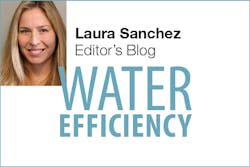Concrete, one of the building world’s most versatile, durable, and economical structural materials, is not infallible. It cracks. And even the smallest fractures can cause significant damage.
Concrete shrinks as it dries. It can crack during this physio-chemical process or due to other factors such as weather fluctuations, seismic activity, or tensile stress. And as many of you are aware, cracks spell disaster for concrete structures. Micro-cracks can allow liquids and gasses to escape containment or to permeate a structure and corrode embedded steel, undermining its integrity.
Scientists have sought solutions to cracking concrete for decades. They have studied the remarkably long-lasting concrete mixtures used by the Romans. They have explored the addition of bacteria to fortify formulas. And more recently, they have discovered a possible solution in incorporating fungi during the mixing process to make concrete self-healing.
The concept, according to lead researcher Congrui Jin, was inspired by the way the human body heals itself by converting nutrients into new substances to repair damaged tissue. The research produced by Jin and his Binghamton University and Rutgers University colleagues suggests that the addition of fungal spores in the formula will produce a self-repairing substance. When cracking occurs and water finds its way in, dormant fungal spores will germinate and grow, forming calcium carbonate crystals that can fill cracks. Once healed, the fungi will return to dormancy and form spores able to repeat the process when new cracks develop.
Because the fungi has to be extremely hearty in order to survive in the challenging, high pH environment of concrete, Jin and his colleagues screened a variety of different species of fungi that grow in nutrient-deficient soils and harsh climates. Ultimately, they found the ideal self-healing additive in a fungus called Trichoderma reesei, a non-toxic native of tropical soils.
While the research is still in its early stages, the possibilities are encouraging. Could this fungus-infused building material offer a continually repairing solution for America’s infrastructure? Where would you use self-healing concrete?
